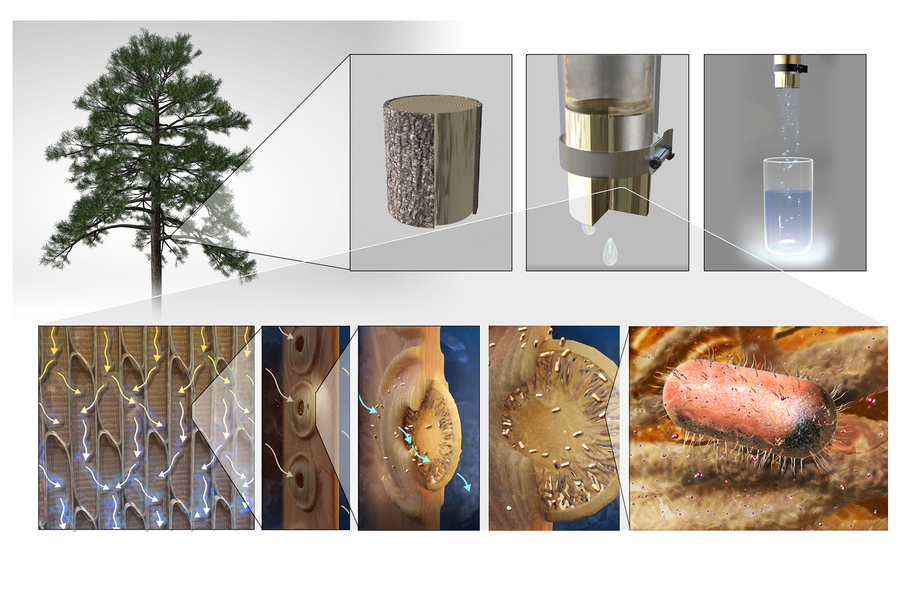MIT engineers make filters from tree branches to purify drinking water
Published on by Water Network Research, Official research team of The Water Network in Academic
Prototypes tested in India show promise as a low-cost, natural filtration option.
 Caption: Xylem tissue in gymnosperm sapwood can be used for water filtration (as seen on top). Xylem is comprised of conduits that are interconnected by membranes that filter out contaminants present in water (bottom).
Caption: Xylem tissue in gymnosperm sapwood can be used for water filtration (as seen on top). Xylem is comprised of conduits that are interconnected by membranes that filter out contaminants present in water (bottom).
Credits: Courtesy: N.R. Fuller, Sayo Studio
The interiors of nonflowering trees such as pine and ginkgo contain sapwood lined with straw-like conduits known as xylem, which draw water up through a tree’s trunk and branches. Xylem conduits are interconnected via thin membranes that act as natural sieves, filtering out bubbles from water and sap.
MIT engineers have been investigating sapwood’s natural filtering ability, and have previously fabricated simple filters from peeled cross-sections of sapwood branches, demonstrating that the low-tech design effectively filters bacteria.
Now, the same team has advanced the technology and shown that it works in real-world situations. They have fabricated new xylem filters that can filter out pathogens such as E. coli and rotavirus in lab tests, and have shown that the filter can remove bacteria from contaminated spring, tap, and groundwater. They also developed simple techniques to extend the filters’ shelf-life, enabling the woody disks to purify water after being stored in a dry form for at least two years.
The researchers took their techniques to India, where they made xylem filters from native trees and tested the filters with local users. Based on their feedback, the team developed a prototype of a simple filtration system, fitted with replaceable xylem filters that purified water at a rate of one liter per hour.
Their results, published today in Nature Communications , show that xylem filters have potential for use in community settings to remove bacteria and viruses from contaminated drinking water.
The researchers are exploring options to make xylem filters available at large scale, particularly in areas where contaminated drinking water is a major cause of disease and death. The team has launched an open-source website, with guidelines for designing and fabricating xylem filters from various tree types. The website is intended to support entrepreneurs, organizations, and leaders to introduce the technology to broader communities, and inspire students to perform their own science experiments with xylem filters.
“Because the raw materials are widely available and the fabrication processes are simple, one could imagine involving communities in procuring, fabricating, and distributing xylem filters,” says Rohit Karnik, professor of mechanical engineering and associate department head for education at MIT. “For places where the only option has been to drink unfiltered water, we expect xylem filters would improve health, and make water drinkable.”
Karnik’s study co-authors are lead author Krithika Ramchander and Luda Wang of MIT’s Department of Mechanical Engineering, and Megha Hegde, Anish Antony, Kendra Leith, and Amy Smith of MIT D-Lab.
Jennifer Chu | MIT News Office
Taxonomy
- Filtration
- Filtration Solutions
- Filtration